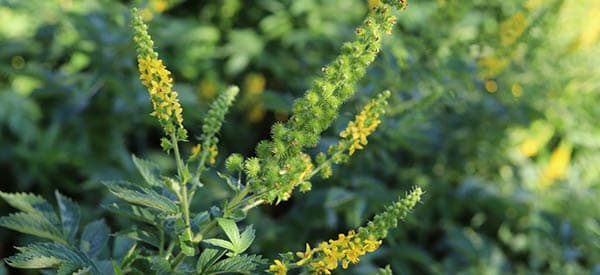
Agrimony
Common agrimony (Agrimonia eupatoria) is an herbaceous plant of the Rosacea family cultivated for its medicinal benefit. It is considered an “all-heal” plant for many illnesses and is widely used in traditional medicine. Agrimony has a deep root in folklore since it was believed to be effective in warding off witchcraft. In voodoo practices, it was used to repel jinxes and hexes and send them back to the spell caster.
The aerial parts of agrimony emit a sweet scent, especially its flowers that exude an apricot-like fragrance. Thus, it is used for making potpourris or improving the taste and aroma of homemade beer. Its showy yellow flowers grow in towering spikes earning names such as church steeples and fairy’s wand.
Agrimony use is traced back to the Anglo-Saxons (it was known as garclive), where it was used as an antidote for snakebites. The Greeks named it Argemone, meaning healing to the eyes. Greek physician Pedanius Dioscorides recommended the herb for his patients with ulcers. In the 18th century, it was discovered as an effective plant for treating tuberculosis and jaundice.
Where Is Agrimony Found
Agrimony is abundant in the Northern hemisphere, particularly in Europe and the western United States. There is also a species that grows in North Africa. They love to flourish in hedge banks, woodland margins, and meadows. In temperate countries, agrimony is a common wildflower occurring in grassy places. Presently, Spain is the largest producer of agrimony; whereas France, Italy, and Bulgaria benefit from the industry.
How To Identify Agrimony
In the wild, agrimony is identifiable by its tall, spiky flower and jagged leaves. This aromatic perennial grows hooked seeds, often found attached to clothes and animal furs. Sheep and goats will feed on agrimony but not the cattle and swine.
 Leaves. Agrimony leaves are dark green with a whitish underside, arranged alternately on the stem. The leaves have varying sizes. Those near the ground are longer. Leaves become shorter as they move up the stem. The leaves are pinnate or divided to the midrib into pairs of leaflets. They are oblong to almost diamond-like in shape with toothed edges.
Leaves. Agrimony leaves are dark green with a whitish underside, arranged alternately on the stem. The leaves have varying sizes. Those near the ground are longer. Leaves become shorter as they move up the stem. The leaves are pinnate or divided to the midrib into pairs of leaflets. They are oblong to almost diamond-like in shape with toothed edges.- Flowers. Agrimony produces numerous yellow flowers that are arranged closely in slender terminal spikes. Each flower has five egg-shaped petals, narrower in width than its length and slightly notched at the end. There are about ten stamens with yellow anthers which turn orange upon maturity.
- Fruits and Seeds. After the flowers withered, the calyx of agrimony droops downward. It develops into a green, bell-shaped fruit, surrounded by a fringe of long bristles. The fruit matures into a woody, reddish-brown color with deep furrows and burrs or hooked bristles. The dry seeds are tough and easily attach to clothing.
- Roots. Agrimony has deep, fibrous, and non-tuberous rhizomes. The roots are long, black, and slightly woody.
 Stem. From the roots, erect and cylindrical agrimony stems rose out. They are rough and grow to about 1 to 3 feet or more. Agrimony is mostly unbranched or slightly branched as it grows taller. The stems are slightly grooved, and the whole plant is covered with tiny hairs.
Stem. From the roots, erect and cylindrical agrimony stems rose out. They are rough and grow to about 1 to 3 feet or more. Agrimony is mostly unbranched or slightly branched as it grows taller. The stems are slightly grooved, and the whole plant is covered with tiny hairs.
⇒ The Complete Map of Edible Plants: Find Out What You Have in Your Area! (Video)
Agrimonia eupatoria is one of the species of the herbaceous and flowering Rosaceae or rose family. This dainty and slender plant is known by many names, such as church steeples, liverwort, and stickwort.
Agrimony has a wide variety of species with minor differences in size, pubescence (plant hairs), or fragrance. However, it should not be confused with hemp agrimony, a species from the daisy family.
The known species of agrimony include:
- pilosa is found in China and used as an herbal remedy for bleeding and diarrhea
- procera syn. A. odorata is the most fragrant variety with larger leaves and paler flowers
How To Grow Agrimony
Agrimony is easy to grow and thrives well in USDA Zones 6 to 9. Since it is a wildflower, it can grow with little to less maintenance. This herb is a good companion plant with other perennial herbs.
You can plant agrimony directly in the garden as a border plant. They also look good in containers, provided the medium can hold moisture but is well-drained. However, they don’t tend to grow as tall as they should when planted in pots compared to their growth if planted in the garden.
Agrimony can grow from seeds, which you can buy at online seed stores, or root cuttings. They can thrive in all types of soil but proliferate healthily in well-draining soil. Here’s how you can grow your own medicinal plants at home.
Growing Agrimony From Seeds
Agrimony has a long growing season and is best planted in spring after the dangers of the last frost. You may also start them indoors anytime to make them ready for transplant by springtime.
Ensure successful germination by stratifying the seeds for 4 to 8 weeks before sowing them. To do this, fill a zip-lock bag with moistened vermiculite and place it in the fridge. Keep the bag moist until the seeds start to sprout.
If you live in areas without frost, you can go ahead and sow the seeds directly in the garden or start them in a seedling tray.
Sprinkle the seeds in a well-draining tray filled with all-purpose soil. Cover them lightly with soil, about ¼ inch, and moisten the tray with water.
Water the medium only if the soil feels dry and thin the plants to enable healthy growth. Transplant the seedlings when they reach at least 4 inches.
Growing Agrimony From Root Cuttings
Alternatively, you can grow agrimony by foraging for roots in the wild. Choose a healthy plant, dig it up, and then cut its roots into 3-inch sections. Replant the mother plant in its spot for it to re-grow new buds.
Put the foraged roots in a tray of seed-raising mix and cover them lightly with the medium. Mist the soil, cover the tray with plastic, and place it in an area with indirect light. Keep the soil moist until shoots and new roots develop.
Once the shoots are about 4 inches tall, divide the roots and transplant them to their permanent place.
Plant Care and Maintenance
Agrimony needs little intervention and can thrive in a variety of soil conditions. Fertilizer is unnecessary unless the plants are growing stunted.
Care for agrimony is simple, and they only need the following growing requirements:
- Well-draining soil
- Full sun to partial shade
- Soil pH level between 6.0 to 7.0
- Watering when the soil is dry
While the plant is generally resilient, it is still prone to pests and diseases. Root rot and powdery mildew may occur when the plant is waterlogged. The best way of preventing them is to avoid overwatering the agrimony.
How To Harvest Agrimony
Agrimony takes time to grow and may not bloom quickly. You can harvest the leaves anytime when you need them. But if you want more potent parts for medicine, harvest them in mid-summer, just before the flower blooms.
Snip off the whole agrimony and tie them into small bundles. Hang the bundles upside-down in a cool and dry place away from direct sunlight. Allow them to air dry for about a week until the leaves are dry and crisp.
Pluck the leaves and wrap them in a paper bag. You may also keep them in plastic bags, although these cannot prevent molds from forming.
What Agrimony Is Good For And Natural Remedies Made From It
Agrimony is considered an all-heal herb because of its effectiveness against many health problems. It is thus one of the top summer wildflowers that make powerful herbal remedies. Traditionally, it is used to cure snakebites, wounds, and skin problems. It can also cure eye irritation and many eye problems. Its ability to aid in the treatment of eye issues earned its Greek name Argemone (healing to the eye).
Over time, it was discovered to be an effective herb for other health issues, including colds and flus.
Agrimony has astringent properties that can cure ulcers.
As a bitter herb, it aids in various digestive and gastrointestinal complaints such as indigestion, diarrhea, dysentery, and irritable bowel syndrome (IBS). Agrimony is anti-inflammatory, alleviating stomach membrane and tissue inflammations.
The active components of agrimony hold out hope for treating diabetes as they regulate glucose and insulin uptake.
Agrimony can also cure gallbladder problems because of its glycoside content.
The topical application of agrimony is effective against skin issues. It is used to cure acne, pimples, rashes, psoriasis, and eczema. It is also taken orally for managing blemishes, blotches, and bruises. Agrimony contains antioxidant that flushes out free radicals from the body. Thus, it can slow down the aging process and minimize wrinkles and dark spots.
Further, the silicic acid found in agrimony may also foster overall hair and nail growth.
Agrimony is beneficial for people with incontinence or weak bladder control as well. Because of this, it is used to help control bedwetting in children.
Agrimony is one of the potent herbs for treating respiratory conditions and hastening the healing process.
⇒ The Great Depression Food That Saved America (Video)
For women with menstrual issues, agrimony is one of the most useful and effective healing herbs to consider. A tonic of agrimony reduces heavy menstrual bleeding and alleviates cramps. It further regulates difficult menses by soothing the inflammation of the reproductive system.
In summary, agrimony can cure health problems not limited to the following: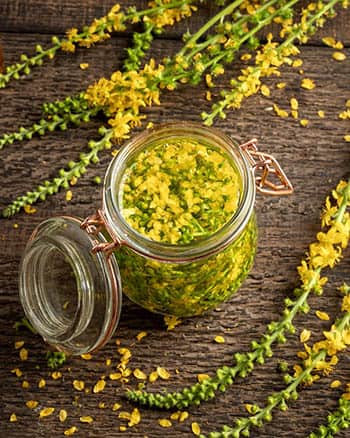
- Diabetes
- Skin problems
- Digestive and gastrointestinal complaints
- Eye problems, conjunctivitis
- Incontinence
- Menstrual issues
- Gallbladder problems
- Aging
- Mood swings and stress
- Ulcers and wounds
- Insomnia
- Intestinal parasites
- Clotting and bleeding disorders
- Various inflammations
What Parts Of Agrimony Are Used For Remedies
All parts of agrimony are used for remedies, including its roots. Its leaves are consumed as infusion, decoction, brew, or tea. A compress and poultice of its ground leaves are used for topical application.
Agrimony infusion is used as a bath additive for relieving minor tension or used as a wound wash.
Agrimony is not a widely used commercial medicine but is a homemade herbal remedy. However, in some stores, you may find it in the form of liquid extract, essential oil, or tincture.
Agrimony Tincture
Ingredients
- ½ cup dried agrimony
- 16 fl oz vodka, 80 proof (40% alcohol)

Steps
- Put the dried agrimony leaves in a mason jar with a tight-fitting lid.

- Fill the jar with vodka.

- Cap tightly and label accordingly. Leave the mixture in a dry place for two weeks, shaking it occasionally.

- After two weeks, strain the tincture and transfer it into amber or colored glass tincture bottles. Keep the bottle tightly closed at all times for its potency to last for up to two years.

How To Use This Remedy
Agrimony tincture is the most effective in treating diarrhea and other health concerns. The standard dose is taking 15 drops of the tincture mixed with juice or water, two times a day. The dosage is intended for adults and children 12 years old and above.
Using Agrimony For Digestive Problems
Agrimony is classified as a bitter herb. It also has a high tannin content and anti-inflammatory properties. These all offer benefits for the digestive system.
- The bitters stimulate the production of both stomach acid and digestive enzymes. This primes the digestive system to receive and effectively process food. Coupled with this is the herb’s ability to regulate the function and secretions of the gallbladder and liver. This, too, allows the body to better process nutrients.
- The tannins have anti-inflammatory properties and they tone the mucus membranes that line the digestive system. The herb regulates the production of mucus. This, like the bitters, aids the gut to better absorb nutrients. This is of great benefit for digestive conditions such as colitis, Irritable Bowel Syndrome (IBS), peptic ulcers, and mild diarrhea.
- The additional reason why agrimony is so helpful in terms of the digestive system is because it has anti-inflammatory properties. These help to soothe the lining or membrane of the digestive tract which can be helpful for treating mild diarrhea and easing cramps associated with IBS and other conditions. Agrimony can also reduce swelling in the digestive system.
It’s important to keep in mind that while there are centuries of anecdotal evidence about the effectiveness of Agrimony, there is insufficient evidence to be able to categorically claim clinical benefits.
Caution: Agrimony should not be used if you are suffering from constipation.
How To Make Agrimony Tea
The most popular Agrimony preparation is tea. You can use the leaves, flowers, and even the thin stems. Although dried leaves are more often used, you could use fresh ones too. How strong you make the tea will depend on what you are drinking it for.
For instance, strong tea is best as a gargle for a cough or sore throat, but very weak tea should be made if you are using it to treat diarrhea or a digestive system issue. The ratio is 1 to 2 teaspoons per one liter of boiling water.

Making the tea is as easy as one-two-three:
- Put the leaves in a container, pour boiling water over the leaves, and cover the container.
- Leave the tea to steep or draw for 5 to 15 minutes depending on the required strength.
- Pour the tea through a strainer to remove any plant matter.
Agrimony tea can be drunk hot or cold and you can add honey if you enjoy the taste more that way. We don’t recommend adding milk!
What Plants Resemble Agrimony
| Features | Common Agrimony (Agrimonia Eupatoria) | Great Mullein (Verbascum Thapsus) | Showy Goldenrod (Solidago speciosa) |
|---|---|---|---|
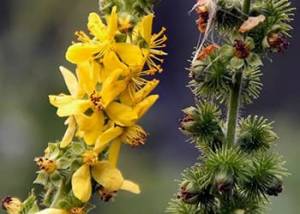 | 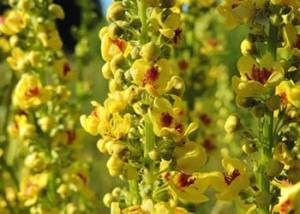 |  | |
| Size | 1 – 3 ft | 3 – 10 ft | 2 – 7 ft |
| Leaves | Dark green with whitish underside; alternate; compound; oblong to rhombic; serrated | Green/silver; velvety; simple; alternate; elliptical | Green; elliptical; alternate; serrated |
| Flowers | Yellow; numerous; terminal spikes; five petals | Yellow; spike; five petals; saucer-shaped | Yellow; terminal spikes; showy |
| Fruits/Seeds | Green to woody reddish-brown fruit; bell-shaped; burrs; achene | Brown; capsule; numerous seeds | Brown; achenes; pappus |
| Stem | Erect; cylindrical; unbranched to slightly branched; grooved; hairy | Erect; single; unbranched; hairy | Erect; unbranched; slender; soft hairs on upper half; hairless on lower parts |
| Scent | Spicy sweet; apricot-like flower scent | Slightly astringent; honey-scented flowers | Sweet; anise-like |
Agrimony Products To Consider
- Arnica Flower Powder – A versatile herbal powder often used to create DIY topical remedies for muscle soreness, bruises, and inflammation.
- Traumeel Arnica + 13 Natural Actives for Muscle, Back, Soreness, Injury, Exercise Related Pain & Soreness – A homeopathic formula designed to relieve pain and soreness from injury, exercise, and back or joint issues.
- Naturevibe Botanicals Arnica Oil 32 Ounces | 100% Pure and Natural | Great for Skin Care and Hair Care – A 100% pure and natural oil ideal for soothing skin irritation and nourishing the hair and scalp.
- Boiron Arnicare Gel Natural Soothing Relief for Joint Pain, Muscle Pain, Inflammation, Soreness, and Bruises – A cooling, fast-absorbing gel that provides natural relief from joint pain, bruising, and muscle aches.
- SKINTENSIVE Arnica Bruise Cream for Thin Skin – A gentle cream specifically formulated to reduce bruising and support fragile, aging skin.
- Herb Pharm Certified Organic Oil, Arnica – An organic herbal extract used externally to ease muscle discomfort and promote healing of bruises and strains.
- MONTEREY BAY HERB CO. Arnica Flowers Whole | Used to Produce Infused Oils for Topical Use – Whole dried flowers commonly infused into oils for external use in treating aches, sprains, and bruises.
- De La Cruz Arnica Salve – Foot Cream for Dry Cracked Heels and Feet – A nourishing foot salve that helps repair dry, cracked heels and relieves foot soreness.
Warnings and Cautions
Agrimony is possibly safe for adults when taken for a short period and for a dosage not exceeding 3 grams daily.
Do not use agrimony when pregnant since it can directly affect the menstrual cycle. Its safety for breastfeeding women is not yet established. Thus, it is better to avoid using agrimony for safety.
Do not use this herb for children under 12 years old.
Agrimony contains tannins that may cause allergic reactions. If you are allergic to roses, you are highly likely sensitive to agrimony as well. Rashes can occur when handling fresh or dried agrimony parts.
If you are under medication for other health conditions, consult your physician before using agrimony. Only the doctor and qualified health practitioner can give the appropriate dosage depending on your age, overall health, and specific medical condition.
You may also like:
This Once-Banned Berry Helps People With Diabetes
What Can Disturb My Immune System and How to Strengthen it (Video)
Beat Dry Winter Skin with This Homemade Salve








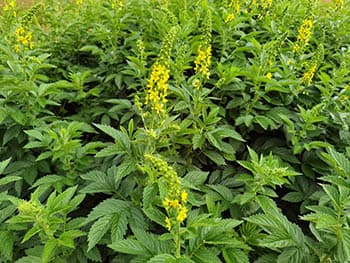 Leaves. Agrimony leaves are dark green with a whitish underside, arranged alternately on the stem. The leaves have varying sizes. Those near the ground are longer. Leaves become shorter as they move up the stem. The leaves are pinnate or divided to the midrib into pairs of leaflets. They are oblong to almost diamond-like in shape with toothed edges.
Leaves. Agrimony leaves are dark green with a whitish underside, arranged alternately on the stem. The leaves have varying sizes. Those near the ground are longer. Leaves become shorter as they move up the stem. The leaves are pinnate or divided to the midrib into pairs of leaflets. They are oblong to almost diamond-like in shape with toothed edges.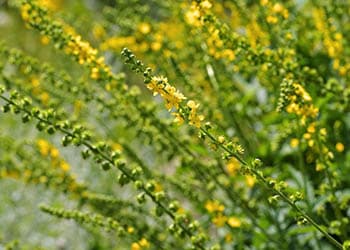 Stem. From the roots, erect and cylindrical agrimony stems rose out. They are rough and grow to about 1 to 3 feet or more. Agrimony is mostly unbranched or slightly branched as it grows taller. The stems are slightly grooved, and the whole plant is covered with tiny hairs.
Stem. From the roots, erect and cylindrical agrimony stems rose out. They are rough and grow to about 1 to 3 feet or more. Agrimony is mostly unbranched or slightly branched as it grows taller. The stems are slightly grooved, and the whole plant is covered with tiny hairs.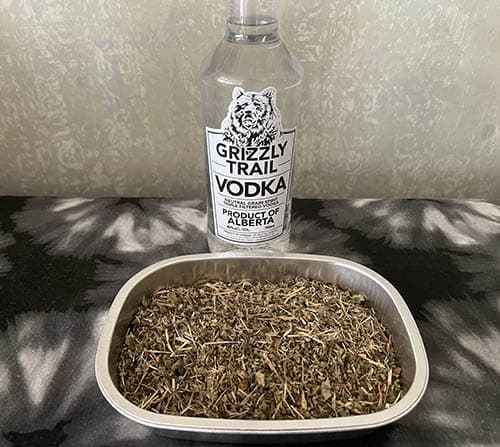
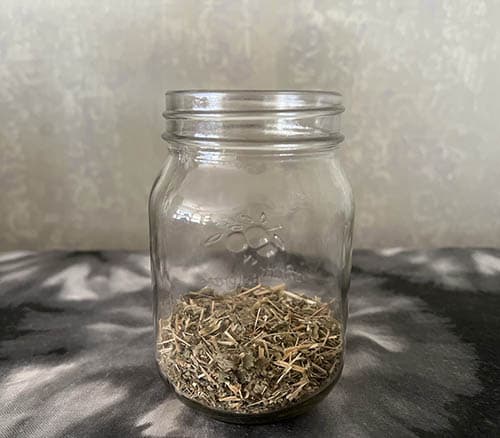

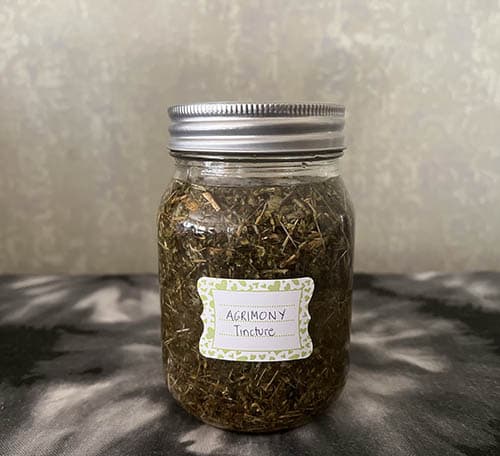
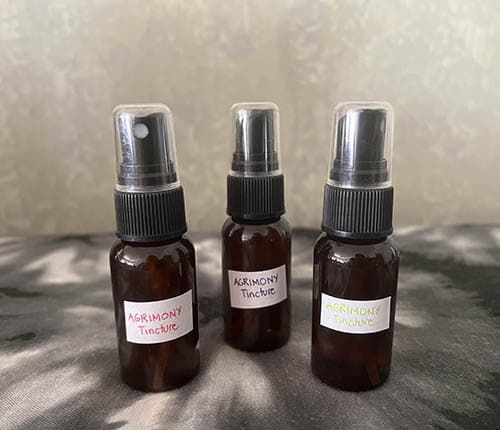
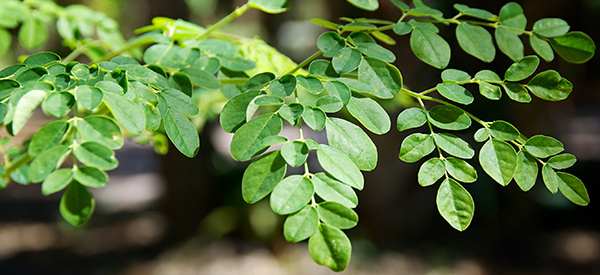
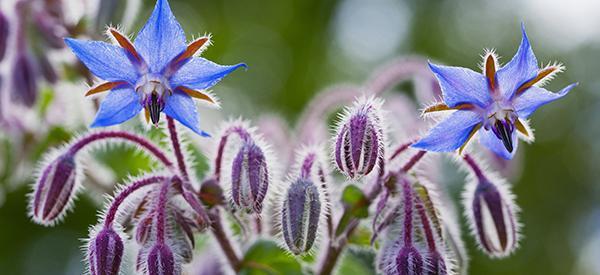
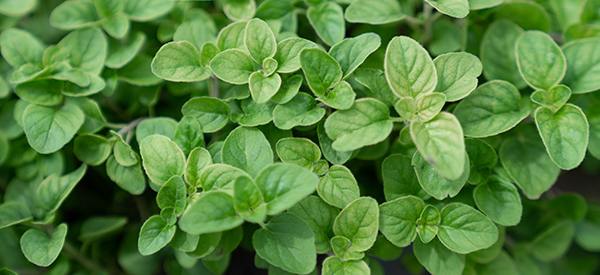
Excellent article!! Thank you 🙏. I just received my 1 lb order of Organic Agrimony!!
Where can did you order your organic agrimony?
Hi Nicole,
We’re happy to hear you like our article!
Many blessings and good health!
Very good article, lots of useful information, I live in the UK and we have fields of agrimony where I live. I pick and dry it every summer.
Hello Jola,
Thank you for your kind comment.
This is great to hear. Happy foraging!
Where can I order organic agrimony
Hello Ehren,
Thank you for your interest in medicinal herbs.
You can find herbs online on Amazon, Etsy, and many health stores. It is best to use Google to find one that delivers to your area.
Many blessings and good health!